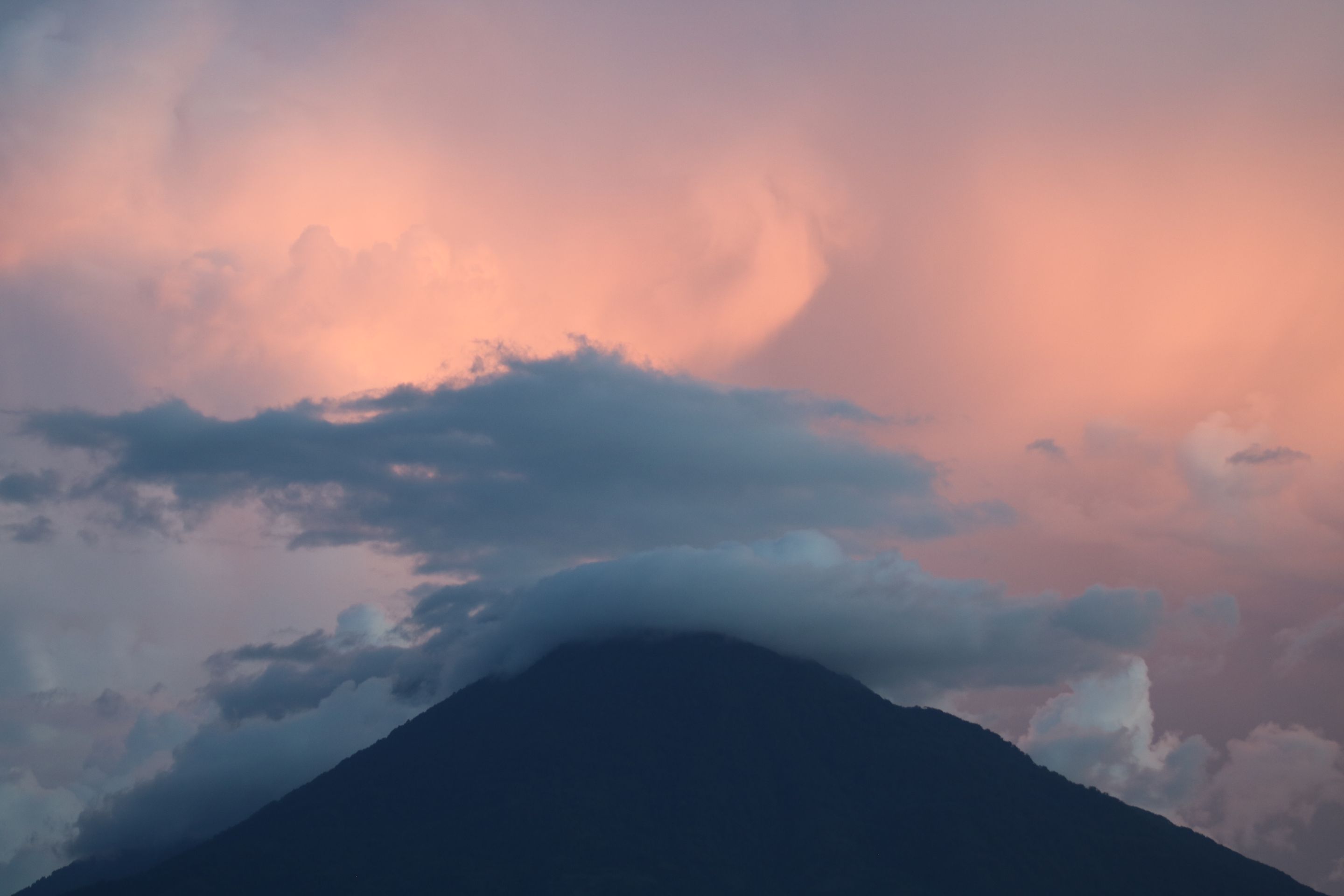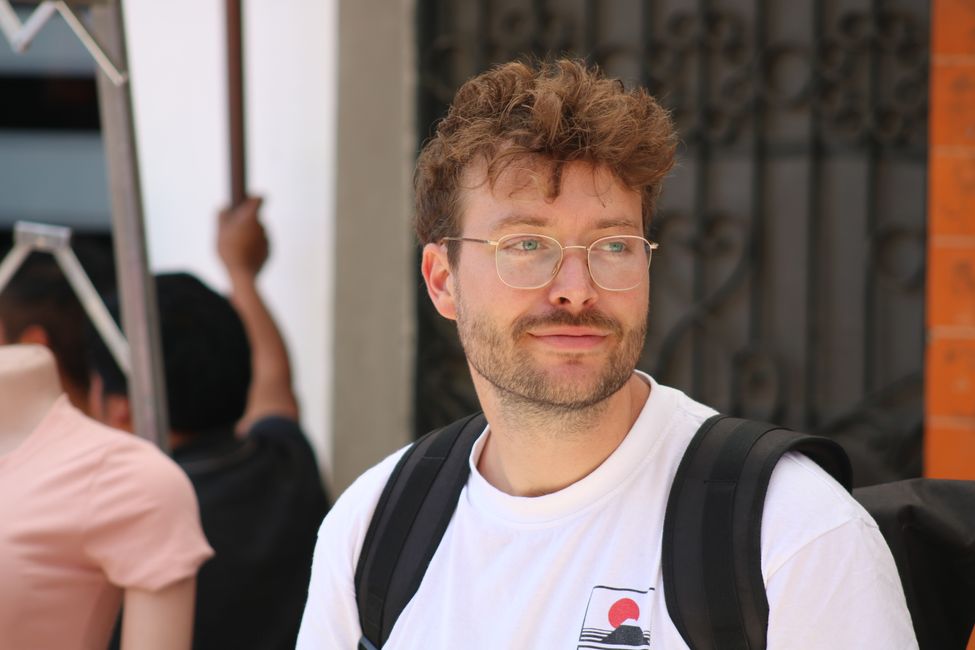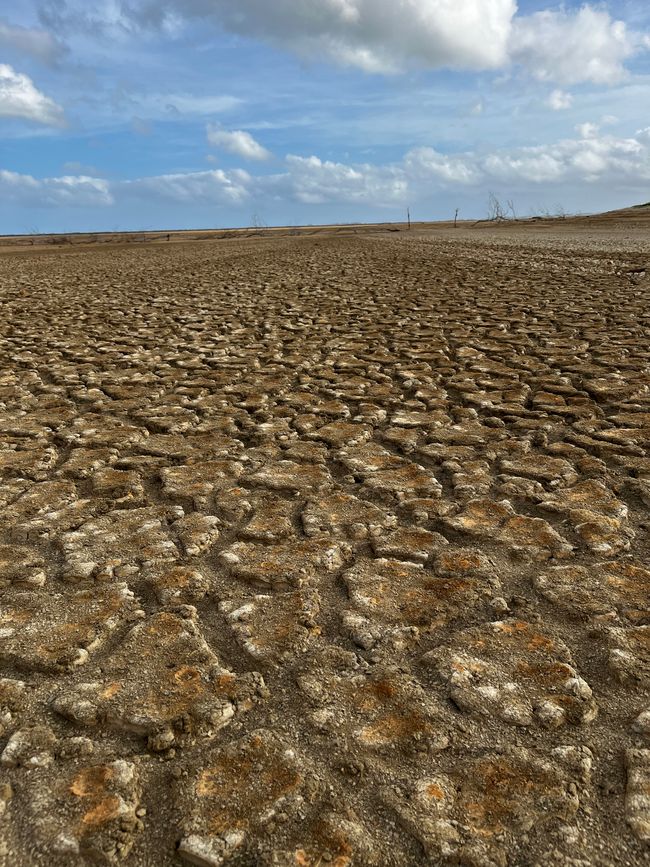La Guajira, the Caribbean desert
Publié: 17.04.2023
S'inscrire à la Newsletter
Punta Gallinas
the northernmost point of South America
Hi everyone, I'm checking in after a long time and was inspired by all of you to update my blog more often. First of all, I want to thank all of you so much! Thank you for the great acceptance of the campaign and the numerous donations. I was really unsure whether I wanted to mix this with my private life, but you did not disappoint me. You have filled many bellies and made many mouths smile! The campaign was a complete success. So that you know what happened to your money, I promised you a blog post, which you will of course receive. Finally, I am sitting at Tino's laptop again and typing with joy. I will divide the post into the fundraising campaign and the desert itself.
The Desert La Guajira
is located in northern Colombia, right next to Venezuela, and is a state marked by drought. It is very remote and difficult to travel to from Riohacha. Especially from Cabo de La Vela, the best way to get around is by dirt bikes or 4x4 off-road vehicles. Theoretically, you can also explore this area alone with a rental car, but you will drive through the desert without proper roads, so you can quickly lose your orientation. Therefore, it is more common to book a planned tour including two nights in both Cabo de La Vela and Punta Gallinas. Here, you will be safely taken to the northernmost point of Colombia and South America along with 5 other people. On the way, you will pass several roadblocks set up by the indigenous people called 'Wayuu'. Usually, these are simple ropes attached between two tree trunks, sometimes even old motorcycle chains. On the tour, you have to pass about 50 barriers in each direction. These are set up to request food in this remote area. Most of the time, children are standing there. Usually, the men are fishing and the women are near the children, selling handicrafts such as colorful crocheted bags. Overall, the Indians are organized in about 30 large families. The tour is a double-edged sword and characterized by conflicting emotions. The landscape is simply breathtaking, the combination of turquoise Caribbean water and desert dunes is unique, but here you become aware of your privileged position and see poverty that you rarely encounter.



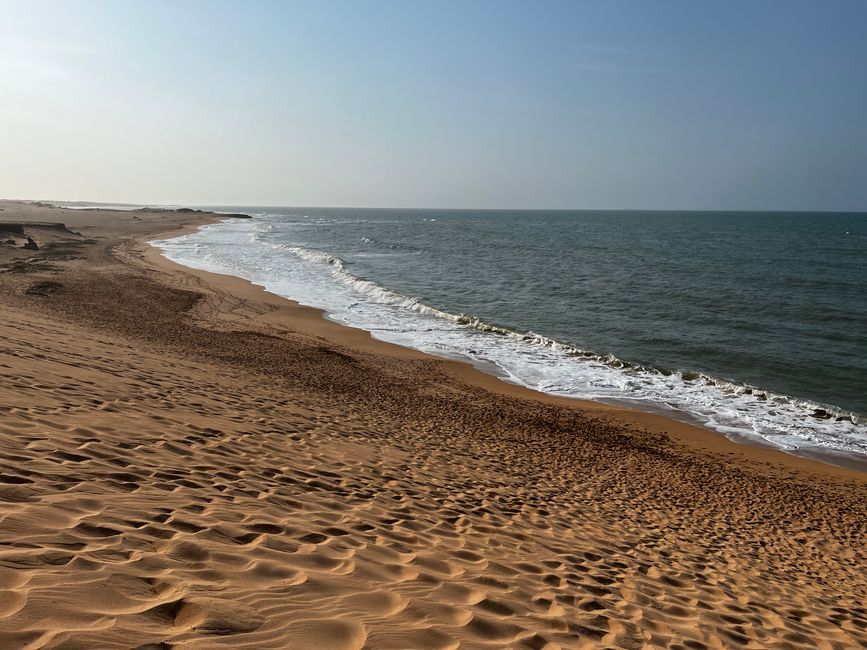



The Fundraising Campaign
It quickly became clear to me that I wanted to visit this part of Colombia and my plan was to book a normal tour here. During my stay on the Colombian coast, I repeatedly heard about the poverty there. For example, Alex, a friend from Costeño Beach, told me about his experience staying with an indigenous family. He told me that he had originally planned to stay for 4 nights, but had to leave after two nights. I got to know him as a very honest, strong, and responsible man, so this meant something. In addition, there was a protest by the indigenous people in the desert during the time I was there, which lasted for about 10 days. During this time, tours were also not possible as the roads were completely blocked. The protest was against the government, which neglects the region. You can also see this, for example, in the immense plastic pollution in and around Uribia, the capital of the Wayuu.


Last year, 90 children died from malnutrition. All of this stirred mixed emotions in me and made me think. It felt wrong to travel here. I had reached the point where I didn't want to see the desert anymore. But then I thought to myself, that's not a solution either, and would just be running away. It felt like buying passage into the land of the Wayuu with a tour. Then I thought, why not just bring more donations myself, but this would be just a drop in the bucket. In the end, I said to myself, what is best for the Indians, and that's how I came up with this idea. Especially because I rarely donate and never know where the money really goes, I thought that friends and family see similar problems when it comes to donating. During the fundraising campaign, I often felt insecure and went through a process of ups and downs. In the end, I can tell you that it is legitimate to be happy about carrying out a fundraising campaign, and it is okay to allow yourself to be happy about it. The recipients are happy, which can make you as the organizer happy, and the donors can also be happy. I also noticed that what was difficult for me at the beginning, talking about the topic with travelers, is also okay. Through this, I received so many ideas about what the Wayuu people might need, I inspired many people to do something similar on their own travels, some even told me about a similar campaign afterwards, and I also received more donations because of this.
Implementation
At first, I wanted to book a normal official tour. But when I realized your huge response and the amount of food to be transported, I canceled this tour. Thanks to all of you, I was able to invest 875 euros in food and drink!
Thank you so much!
So I planned to go to Riohacha, the largest city in Guajira state, and get an overview there. I booked a night at the Bona Vida Hostel, which I can highly recommend. The price-performance ratio is great! For 11 euros, you get a nice pool and breakfast included.
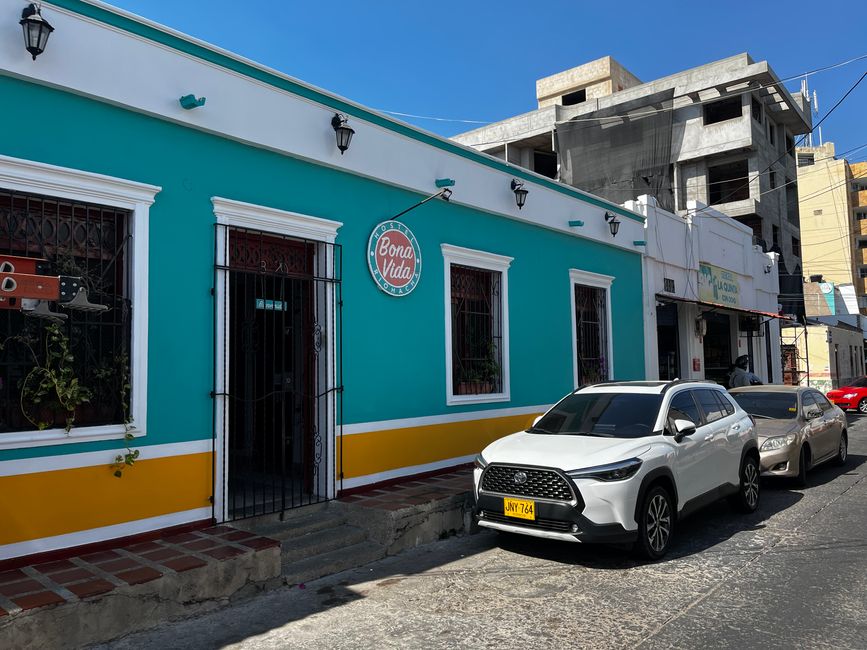
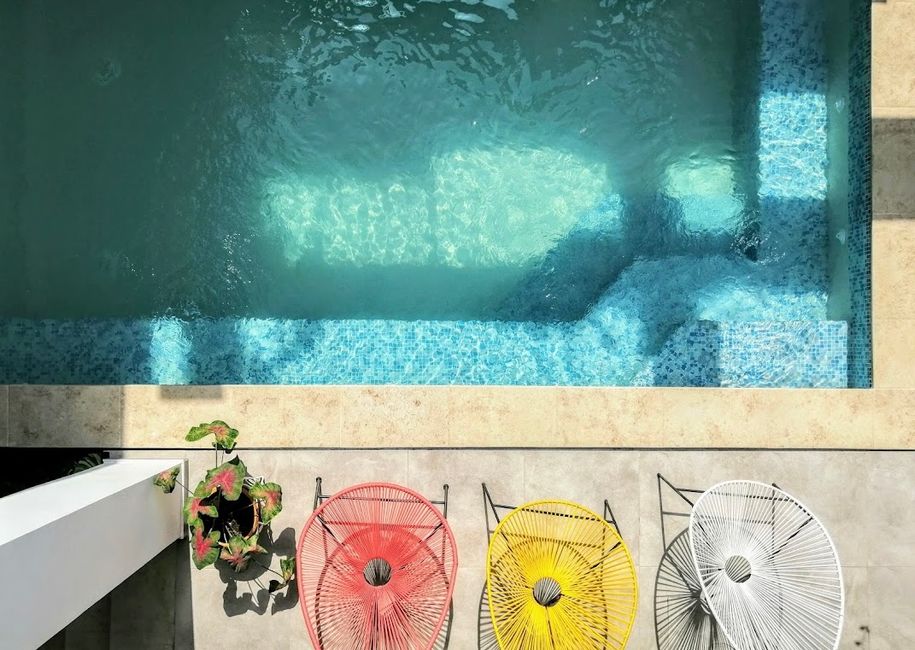
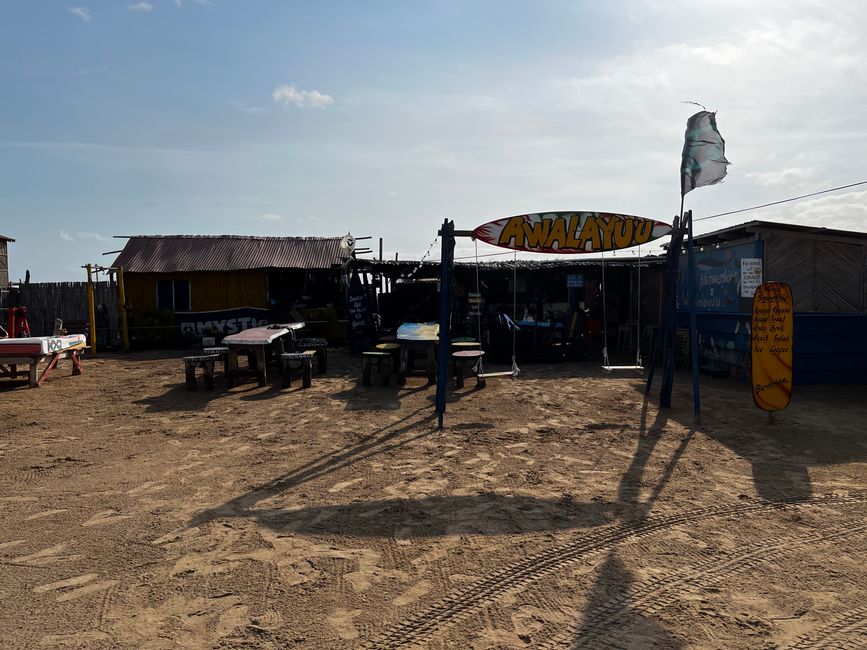
After that, I went alone to the largest supermarket Olimpica in Riohacha. In total, I filled 4 large shopping carts with mainly food and some clay, pens, and notebooks. Many supermarket employees helped me with this. When the manager found out that a Gringo was loading 50 packages of 3 kilograms of rice into his cart, he came over and helped me with ideas and also finding the best value for money of the products for over two hours. In the end, I decided on a package consisting of 16 different products. Once this was done, a colleague from the warehouse brought 50 packages. The manager also gave me cardboard boxes for packing for free, which turned out to be extremely useful in hindsight.
Shopping list: coffee, powdered milk, oat milk, onions, plantains, oranges, oats, pasta, tomato sauce, canned tuna, rice, cornmeal, beans, sugar, water, and oil.
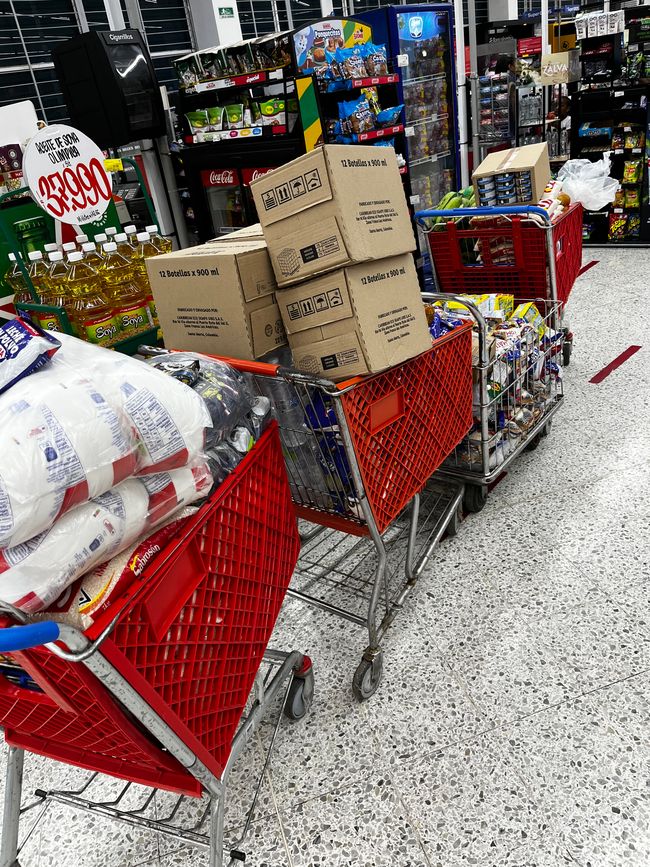

Afterwards, everyone helped me transport the groceries in two taxis, as the first taxi was already too low due to the weight. When we arrived at the hostel, both taxi drivers and I brought everything into the entrance area of the hostel. The manager already knew about it. It was already 9:30 PM and I started sorting the goods. Fortunately, Swann, a French guy, came to my aid and taped the boxes. Without him, I would have packed until 2 AM for sure. So I finished around midnight. Each box was filled with 16 different products. I filled some boxes with three or four times the quantity, as I had a few boxes too few and wanted to give them to large families.
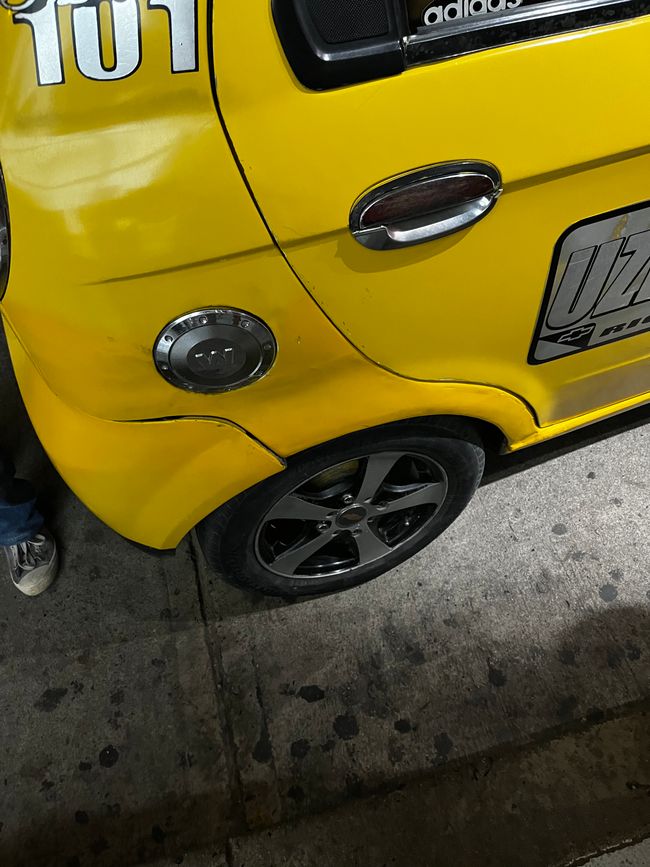

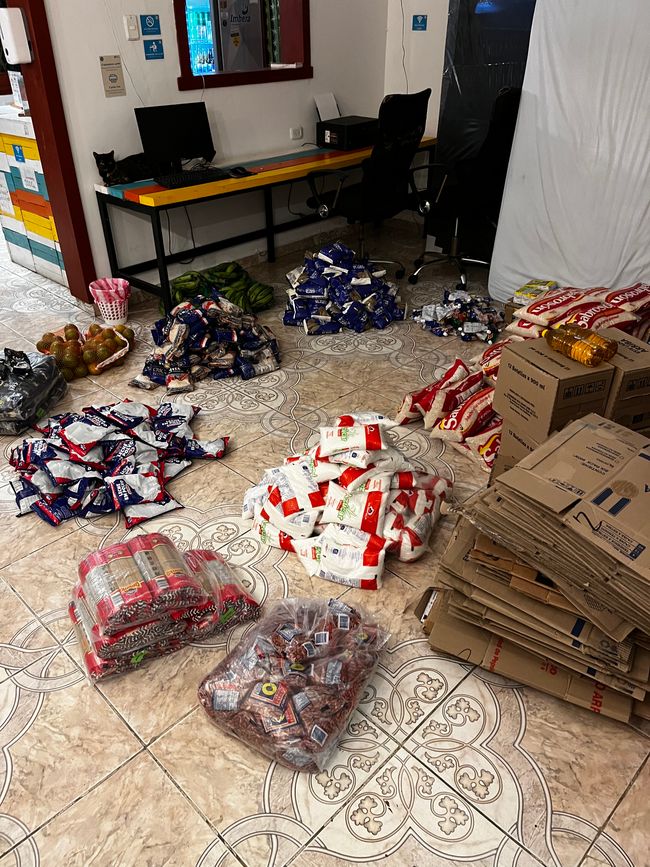
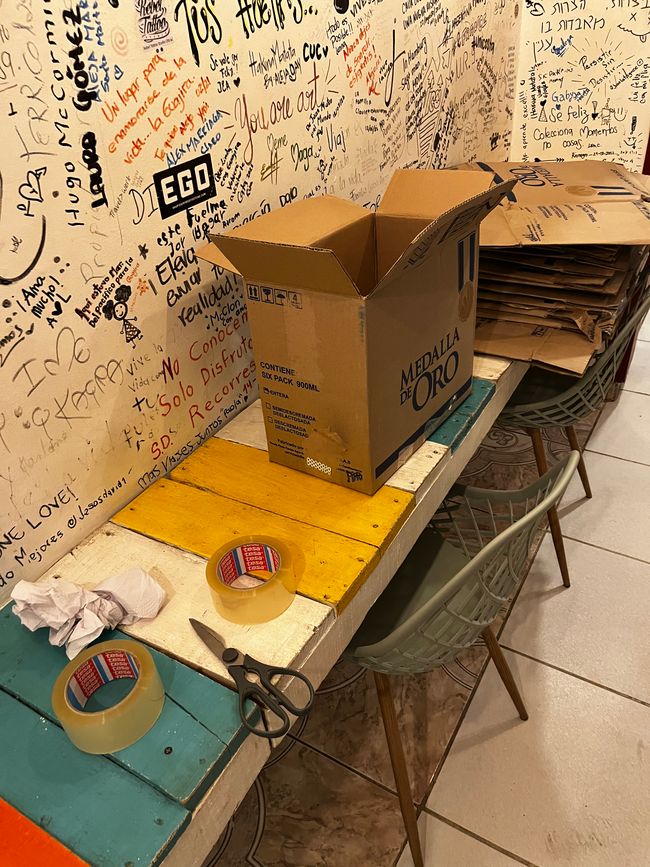

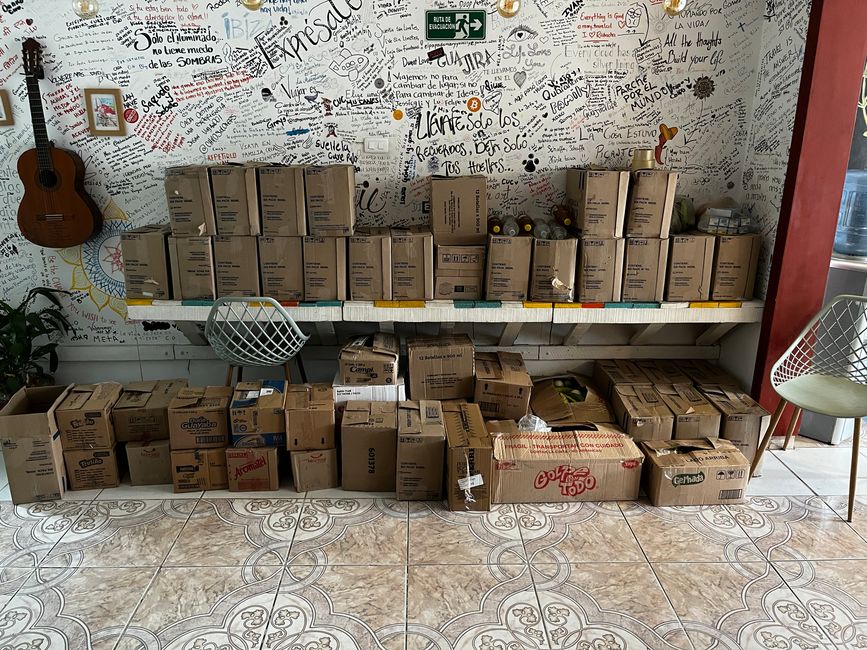
The next morning, I still didn't know how I would transport the boxes into the desert. Nelson didn't get back to me and I didn't know what was going on. But after a while in Latin America, you learn the word 'tranquillo'. So I was not stressed at all and thought to myself, everything will work out, go over to the second hostel where breakfast is served. And lo and behold, Nelson happened to be standing above the entrance on the balcony and greeted me, telling me that he had ordered a pickup truck for 10 AM and we could share the cost, as he needed to transport a bed. Life can be so simple. And at 10 AM, the driver arrived and we loaded everything. We had to switch again in Uribia and reload everything. After a total of 6 hours, we arrived in Cabo de La Vela, and Nelson arranged a hammock at his neighbor's place for me to spend the night.

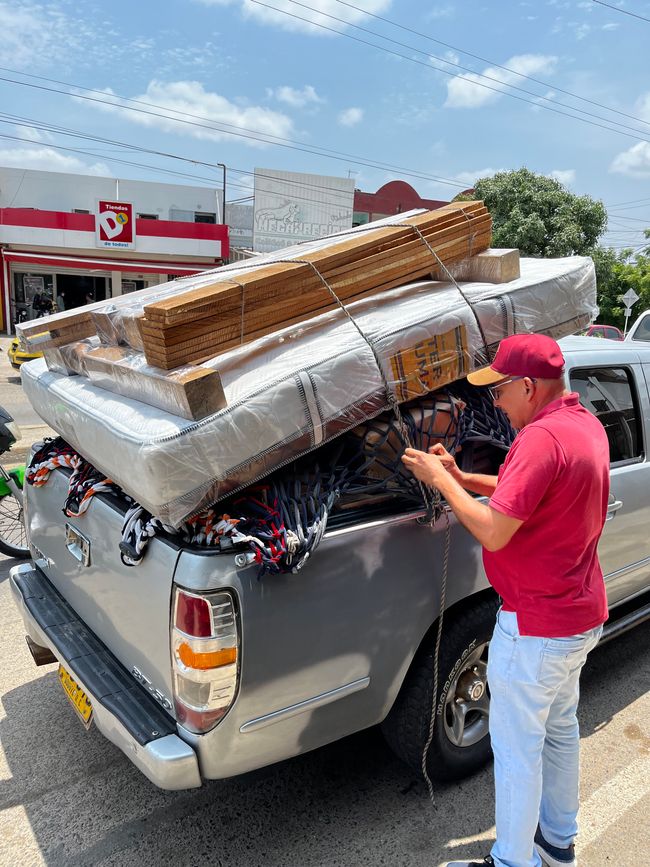
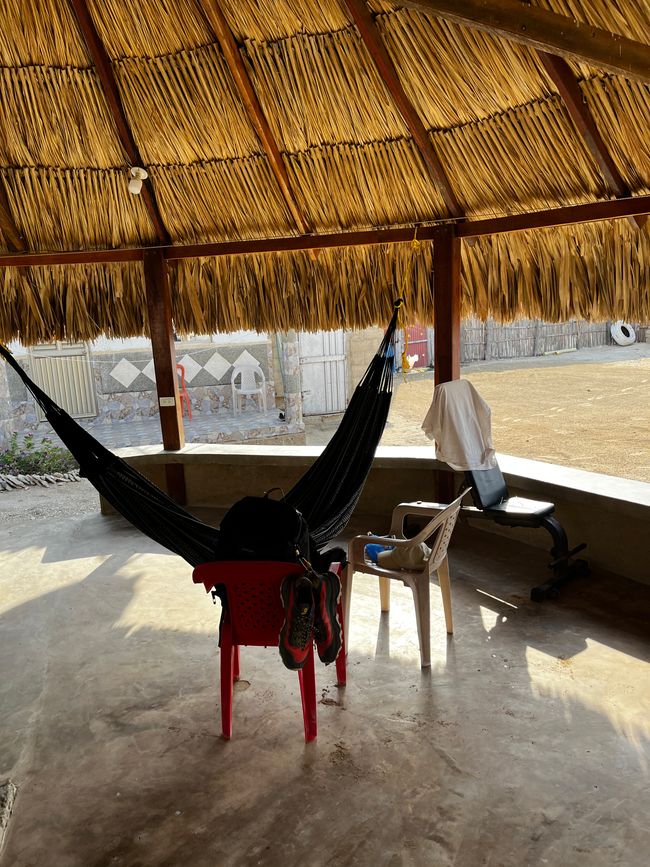
The next day, very early in the morning, a friend of the previous driver came and offered me a fair price for the onward journey to Punta Gallinas. I was now traveling alone with him. He only spoke Spanish, so I had to use all my language skills. He knew the last desert section very well and also knew which family was poor, so we started distributing the packages. At the roadblocks, we often handed the packages out of the windows, or I quickly got out and grabbed one from the trunk. There were many moments of genuine happiness. The grandmothers often prayed to God and praised me. Some of them couldn't open up in the moment of delivery, and I only saw through the rearview mirror how they clapped their hands to their faces and rejoiced when opening the package.
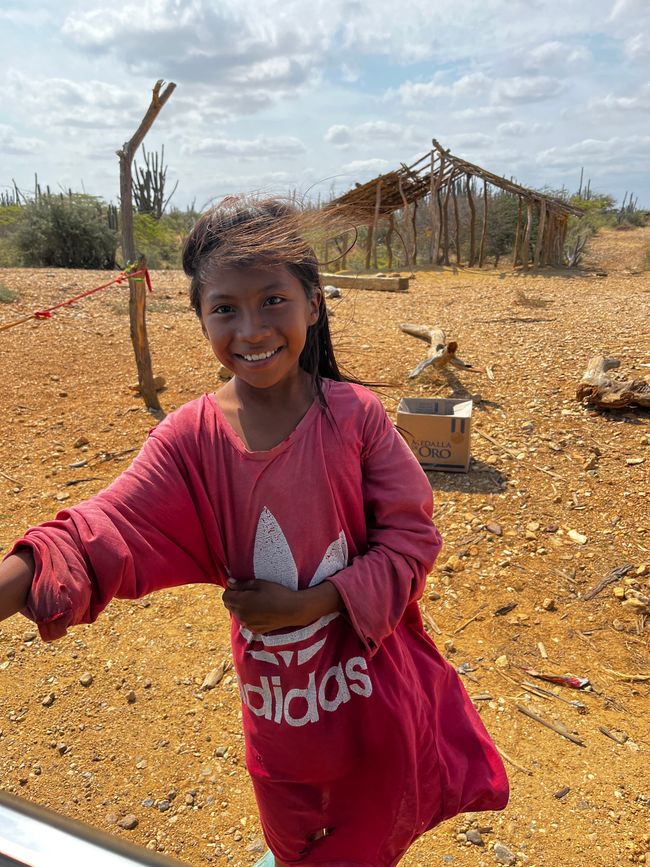
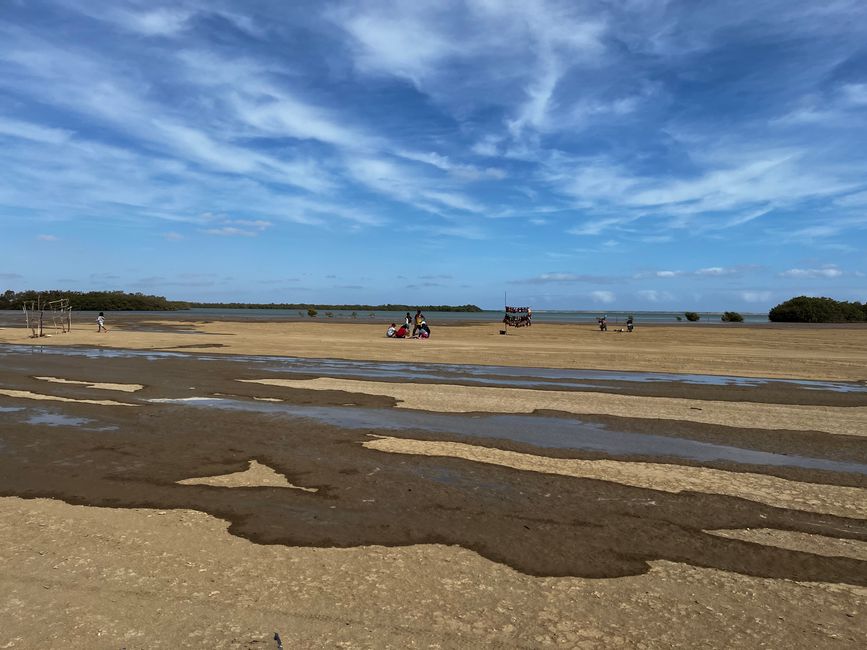
Out of respect, I took only a few pictures of the people themselves, I hope you understand that.
In the end, we arrived in Punta Gallinas and crossed the last stretch by boat, and I also took the tour to the dunes on the back seat of a motorbike. Usually, everyone does this by car, so here I had a very bumpy and adventurous ride ahead of me and arrived at my hammock just in time for the sunset.
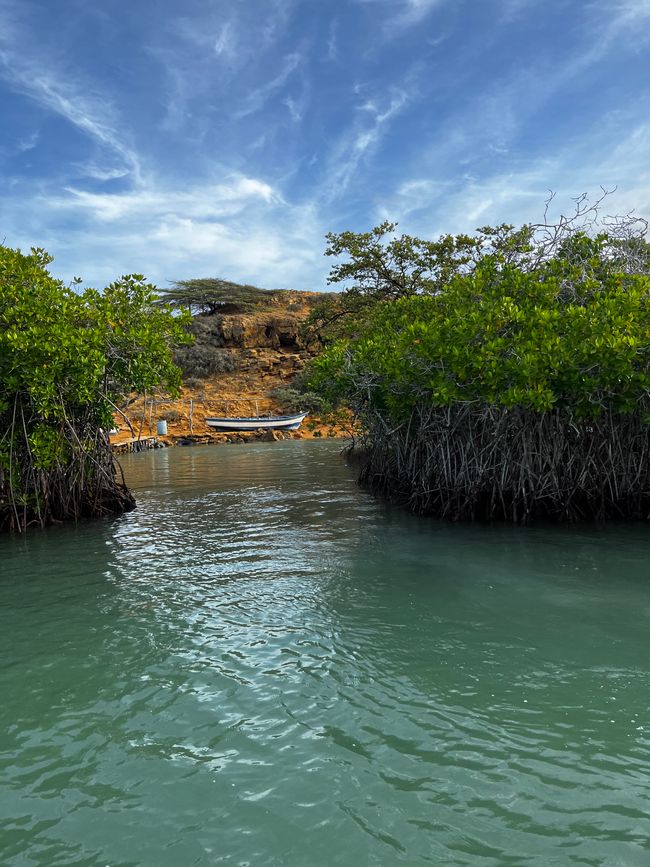
I returned to Riohacha, where I quickly showered and refreshed myself. The picture shows the typical iced tea 'Panela', which is often served for lunch in Colombia. This reminds me of the powdered iced tea that my grandma always had.
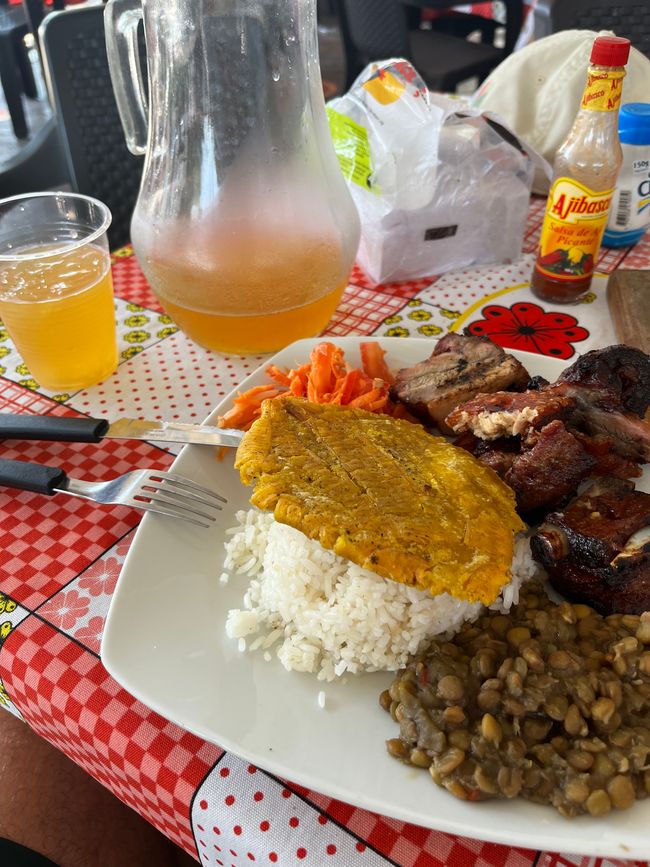
Conclusion: For me, it was a complete success and I look forward to incorporating this more into my travels in poorer countries. This way, I know where my donation is going and decide for myself. However, next time, I would like to share this experience and plan and carry it out together with someone.
Once again, a big thank you to everyone!
S'inscrire à la Newsletter
Répondre
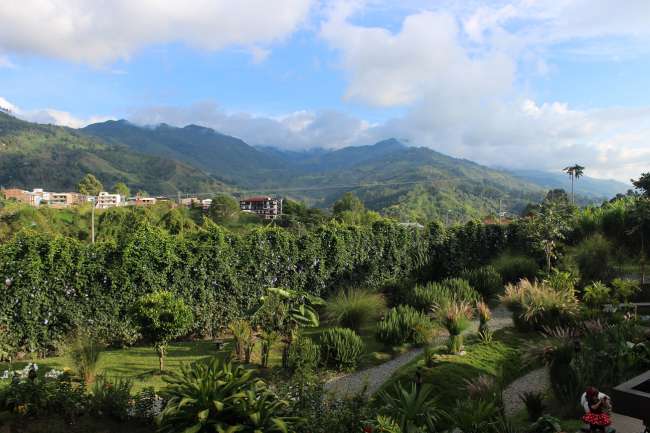
Rapports de voyage Colombie
